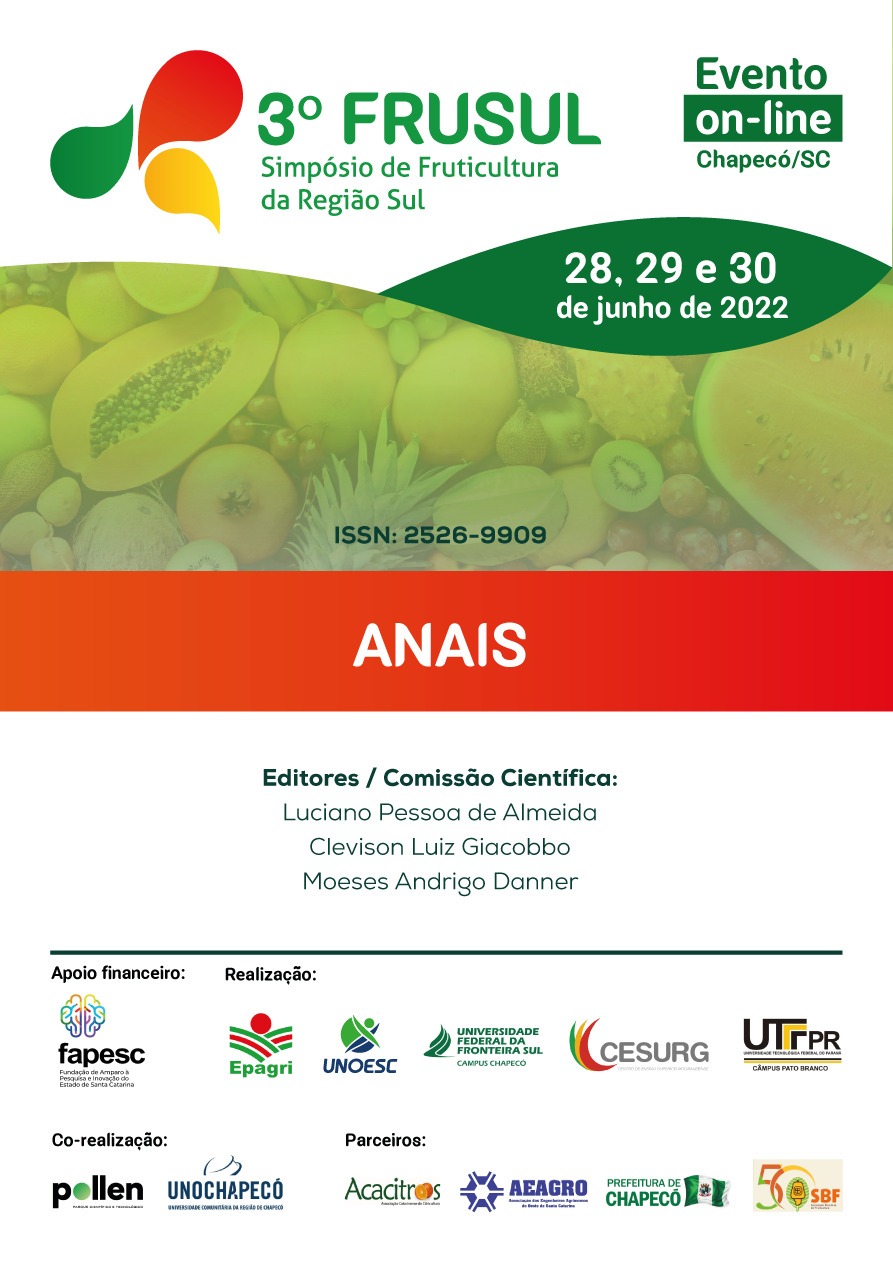Evaluation of the productive potential of blackberry in the edaphoclimatic conditions of Chapecó and region
Resumo
Blackberries are appreciated by consumers and producers for being a species of easy handling, high economic return and productive potential in a short period of time and area. However, the blackberry crop is little explored in the western region of Santa Catarina because of the lack of knowledge about its cultivation. In view of the above, the objective of this study was to evaluate the productive potential of different blackberry cultivars in western Santa Catarina. The experiment was conducted in the didactic orchard of the experimental area of the Federal University of Fronteira Sul (UFFS)-Chapecó, implemented in 2014 and in the Fruticulture and Post-harvest laboratory of the campus. The local climate, according to the Köppen classification, is category C, subtype Cfa (humid subtropical climate), with cold and humid winters and moderate and dry summers. The soil is classified as Dystroferric Red Latosol. The experimental design was completely randomized, consisting of different cultivars of blackberry ('Cherokee', 'Guarani', 'BRS-Tupy' and 'Xavante'), harvested in the 2020/2021 harvest, the sixth productive year of the plants, in maturation stage for fresh consumption. With five replications for each cultivar, consisting of one plant. The planting spacing adopted was 3m between rows and 1.5m between plants, where the plants are conducted in a “T” trellis system, with two wires to support the stems and pruning was carried out at the end of winter of the year of 2020. The productive analyzes evaluated were soluble solids (°Brix), productivity (t.ha-1), number of fruit per plant, fruit weight (g), average fruit volume (cm3). The data obtained were submitted to analysis of variance and the means were compared by the Scott-Knott test at 5%. The cultivar BRS-Tupy showed the highest production per plant (2353.55 t.ha-1), the highest number of fruit per plant (254.6 N°fruit.plant -1), the highest average fruit volume (5.56 cm³) and greater weight (1412.69 g). On the other hand, cv. Cherokee showed significantly lower results in all parameters evaluated with 27.2 N° fruit.plant-1, average fruit volume 2.72 cm³, mass per plant 93.4 g and production 155.6 t.ha-1. In the edaphoclimatic conditions of western Santa Catarina, the cultivar BRS-Tupy is the one that presents itself as a good alternative, especially when considering the production, mass per plant, number of fruits per plant and average fruit volume. The cv. Cherokee was the cultivar that least adapted to the region in terms of production, number of fruits per plant, mass per plant, average volume of fruit. There was no significant difference in the 4 cultivars in relation to the soluble solids content.


